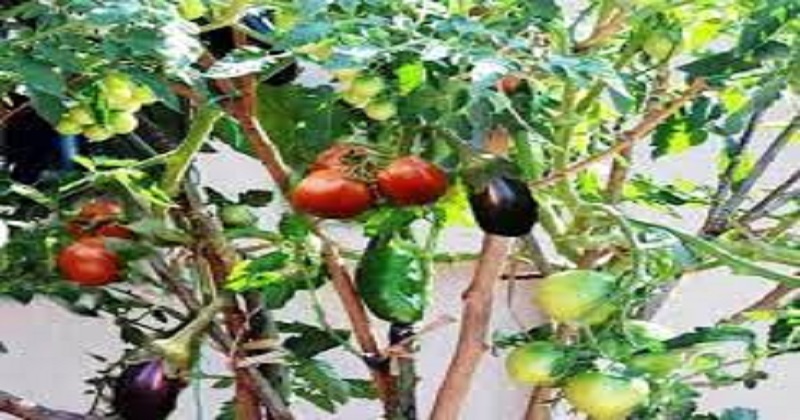
Scientists at the Indian Council of Agricultural Research’s Indian Institute of Vegetable Research (ICAR-IIVR) in Varanasi have developed a technique to grow plants that produce brinjals and tomatoes. The breakthrough is called ‘Brimato.’ The innovation allows the cultivation of more vegetables in smaller spaces in semi-urban and urban areas, including kitchen gardens. As a result, vegetable availability will be improved and the cost of labour, water, and chemicals will be reduced. Brimato plants are estimated to yield 3-4 kilograms of brinjal and 2-3 kilograms of tomato per plant.
Plants named Pomato have previously been successfully grafted at IIVR, which yield a combination of potatoes and tomatoes. Brimato is a multi-scioned vegetable developed through dual or multiple grafting, where two or more ‘scions’ of the same family of plants are linked together to produce multiple vegetables from a single plant. Brimato is a cross between the enhanced brinjal hybrid ‘Kashi Sandesh’ and an improved tomato hybrid ‘Kashi Aman’ which are grafted onto IC 111056 brinjal rootstock.

The development of Brimato
Brimato scientists explained that the brinjal seeds were grafted when they were 25-30 days old, while the tomato seeds were 22-25 days old. Grafting is the process of joining plant parts through tissue regeneration. The stem, root, or branch of one plant is inserted into or affixed to that of another. Stock is the part that provides the root, whereas scion is the added portion.
The seedlings of Brimato were kept in controlled atmospheric conditions soon after grafting. For 5-7 days, the temperature, humidity, and light were maintained at their optimum levels. Then, the seedlings were placed in partial shade for the same period. 15-18 days after the initial grafting operation, the grafted plants were transplanted into the field.
The benefits
According to Dr T.K. Behera, director of ICAR-IIVR, this new method of producing two vegetables from the same plant will help deal with the current nutritional and productivity challenges arising from the lack of space for cultivation. ‘Earlier, this was restricted to flowers or fruits, but we have expanded it to vegetables. Brimato will be very helpful in terms of nutritional security — it is the best method to ensure domestic nutrition as prices of vegetables increase. It also reduces costs and residual toxicity, with low chemical presence in crops,’ he told.
Read more: China deploys 100 rocket launchers at high altitudes during standoff with India
Brimato can be developed for only Rs 10-11 and can take a month to complete. If this idea is applied to a commercial scale, which is being explored, the price of each plant will also drop to Rs 4-5. Behera pointed out that scientists are also planning to develop grafted varieties of other vegetables. Brimato will also be a promising tool to increase crops’ tolerance to biotic and abiotic stresses, such as adverse climatic conditions – it can withstand heavy waterlogging as well as drought-like conditions.

Post Your Comments